Hello, my name’s Andrew and this is a step-by-step guide on how to cure brain fog with a raw vegan diet.
1. Gut Healing
Last year I was in the Adirondacks when I ran into this guy who was handing out leftover pastries, which I normally would have declined being gluten-free, but I was hungry from hiking, so I was like: “screw it.”
Big mistake! Because that night I got extremely sick and couldn’t stop vomiting for three days straight.
Triggers
Initially I thought about taking antibiotics, but I was already struggling with weak digestion and dropping a nuclear bomb on my gut didn’t seem like the best idea at the time.
So I just recovered naturally, but over the next few weeks I noticed that eating certain foods would trigger this freakin’ hurricane of vomiting, diarrhea, bloating, gastritis, and acid reflux.
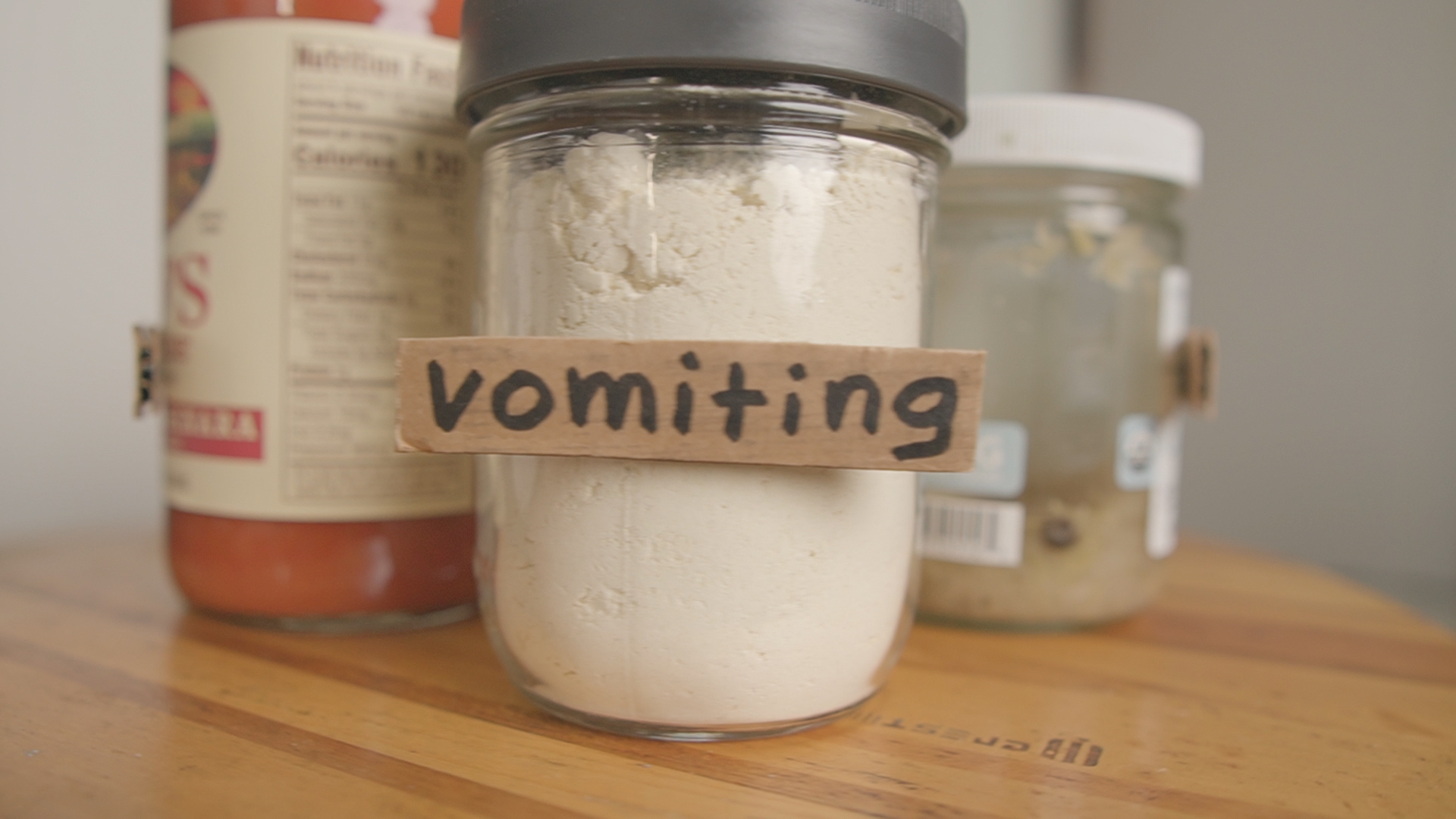
Remedies
After some research I came up with four rules that helped me heal my gut with simple lifestyle changes, but don’t worry about remembering them, because you can always take a look at the full checklist here.
2. Ingredients
Back in 2017 when I switched to barefoot shoes everyone told me it was “too dangerous” and that I was going to “get hurt,” etc.
But what actually happened was that my feet got callused, my muscles got stronger, my stride improved, and six years later I still haven’t had a single injury.

Raw Vegan
So it’s the same with raw vegan, because while cooked foods are easier to digest they make your gut weaker over time…
…and while raw foods are more challenging they’re also more nutritious and make your gut tougher in the long run.
Starting
If you’re curious about what kinds of foods you can eat on a raw diet, I’ve put a list here, but the best place to start with a raw vegan diet is just with a fresh piece of organic fruit.
Fruit
The great thing about fruit is that it’s easy to digest, energizing, hydrating, and full of enzymes that help you break down other foods.
Personally, I like to have a serving of alkaline fruit (aka non-acidic) before each meal, and a few of my favorites are: papaya, mango, watermelon, jackfruit, kiwi, apple, and avocado.
Also, when grocery shopping I try to pick fruits that look ripe and vibrant, and whenever possible I like to stop by the local farmer’s market to see what’s in season.
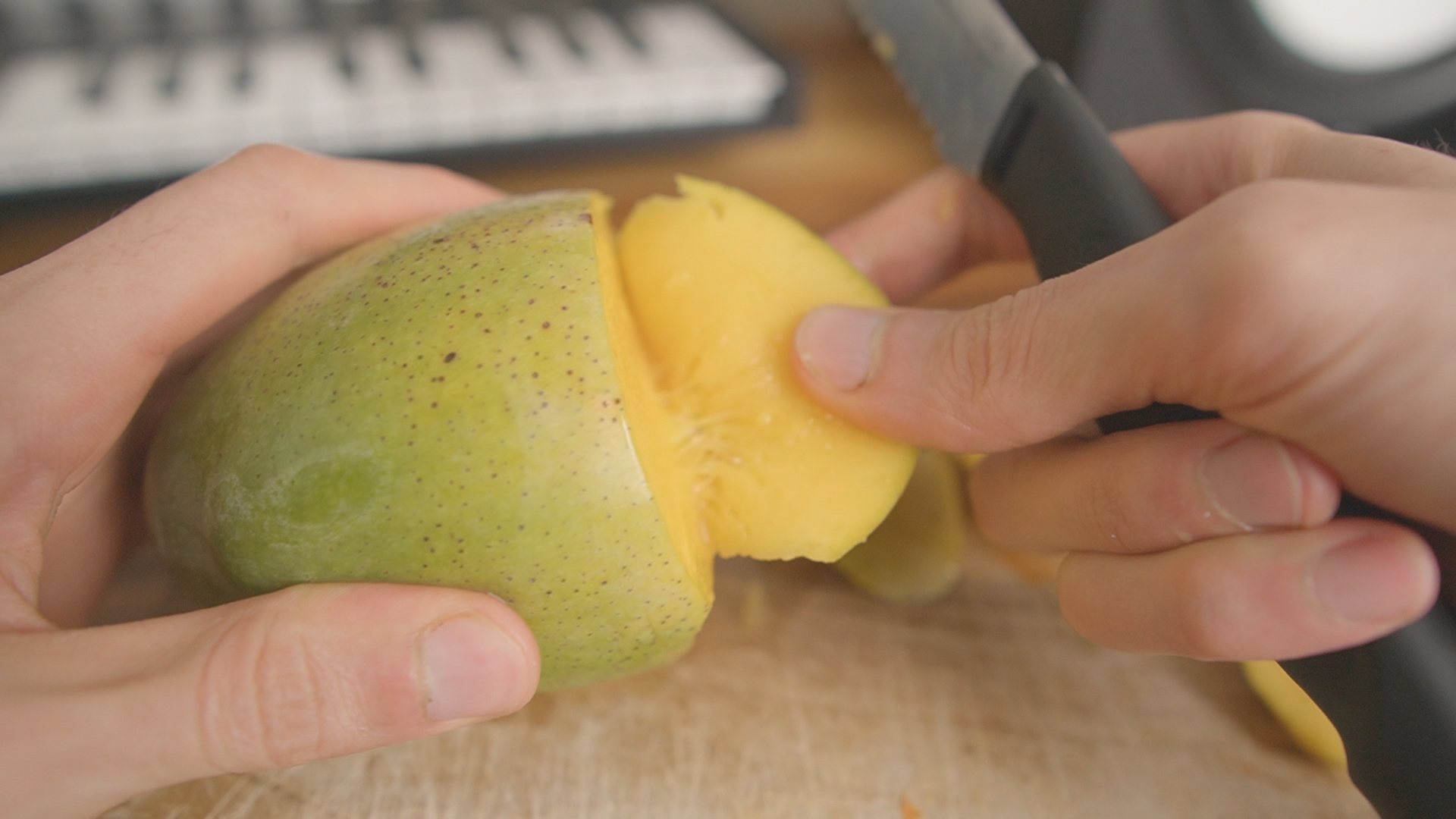
Juice
Another way to enjoy raw vegan food is with fresh veggie juice, which is extremely hydrating, builds healthy stomach acid, and balances your electrolytes…
…although I don’t make fruit juice often, because it’s too much sugar all at once, and, just in general, fresh homemade juice is better than store-bought, because liquids lose their nutrition a lot faster than whole foods.
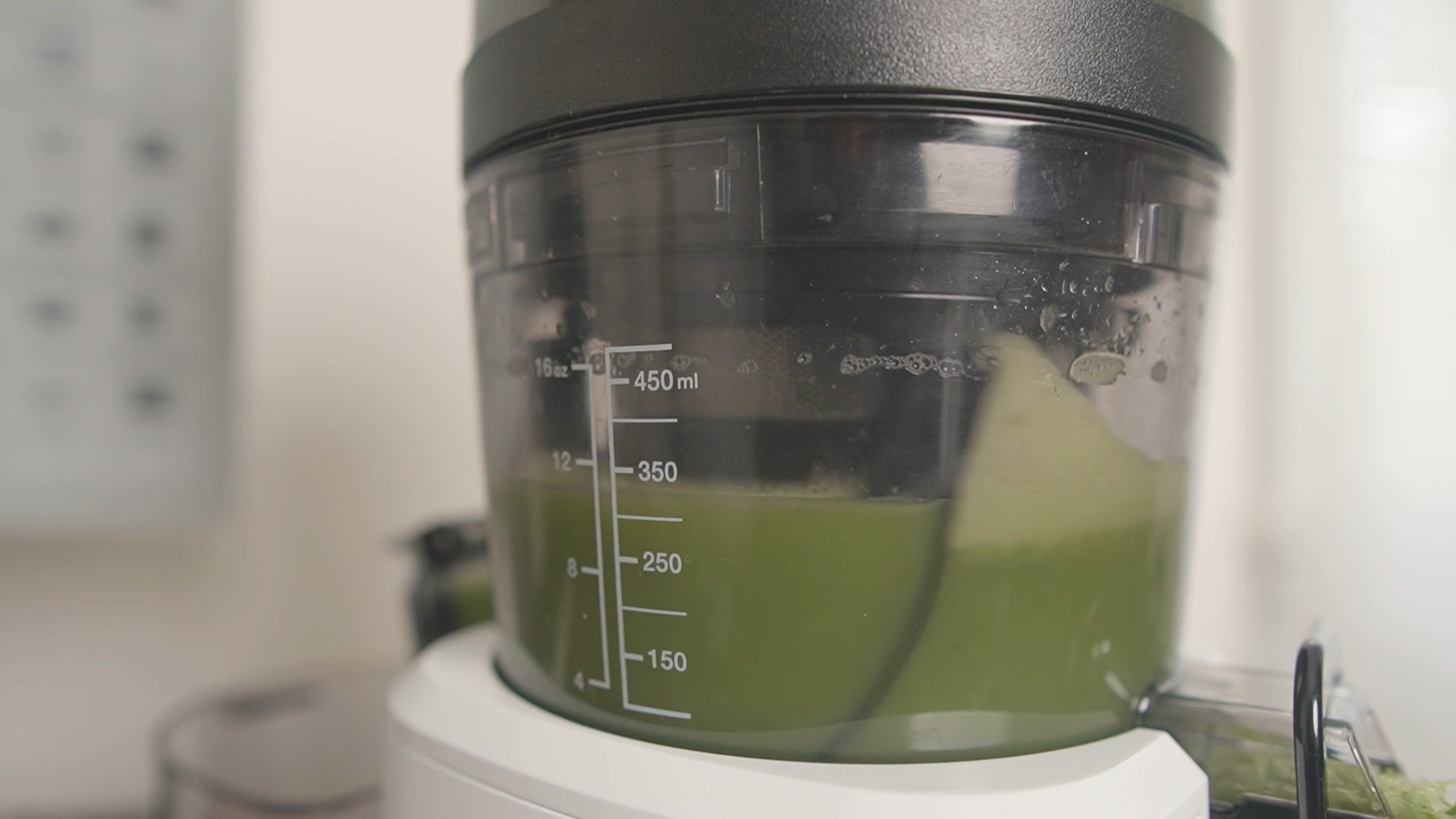
Water
Speaking of liquids, not everyone knows this, but plain tap water often contains toxins like chlorine, fluoride, and heavy metals, so it’s best to use a water filter like Brita or Clearly Filtered (filters fluoride).
Tea
Unfortunately, though, when you filter water it also strips out essential minerals, which can mess up your electrolyte balance and give you a nasty headache.
So I like to make raw mineral-rich teas like: chamomile, nettle, oatstraw, ginger, and cinnamon.
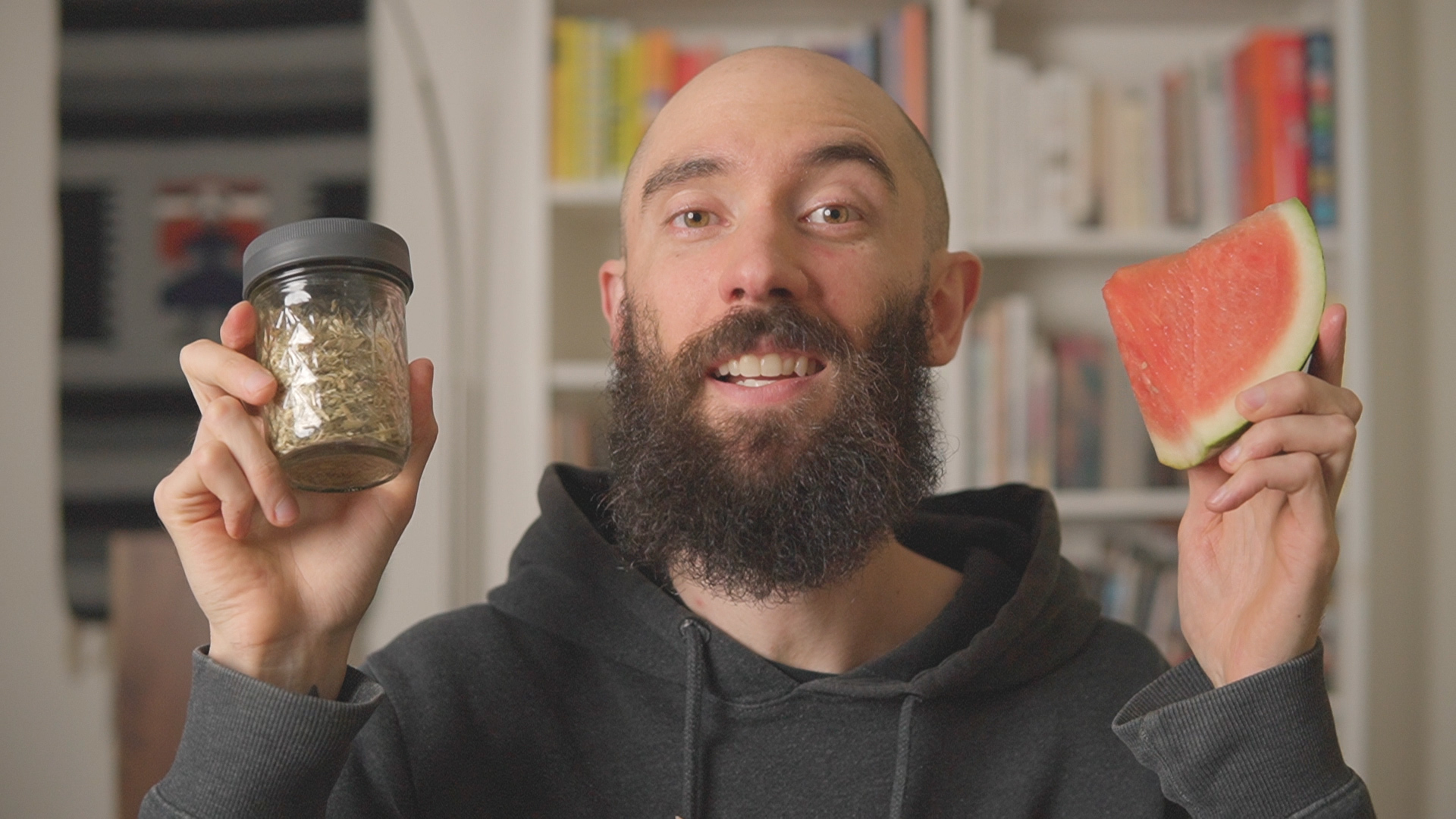
Veggies
After I got used to raw vegan fruits and drinks I started adding in alkaline veggies, which are packed with fiber and have a low glycemic load (meaning they help regulate your blood sugar).
Some of my favorites are leafy greens, zucchini, carrots, green beans, and seaweed, which can easily be tossed in a salad with avocado as an excellent source of fat.
FYI, cruciferous veggies, like kale, broccoli, asparagus, cauliflower, cabbage, and brussels sprouts are ultra hybridized and goitrogenic (which means they can damage your thyroid), and fermented foods, like sauerkraut, tend to be extremely salty and acidic, so it’s best to eat them in moderation.
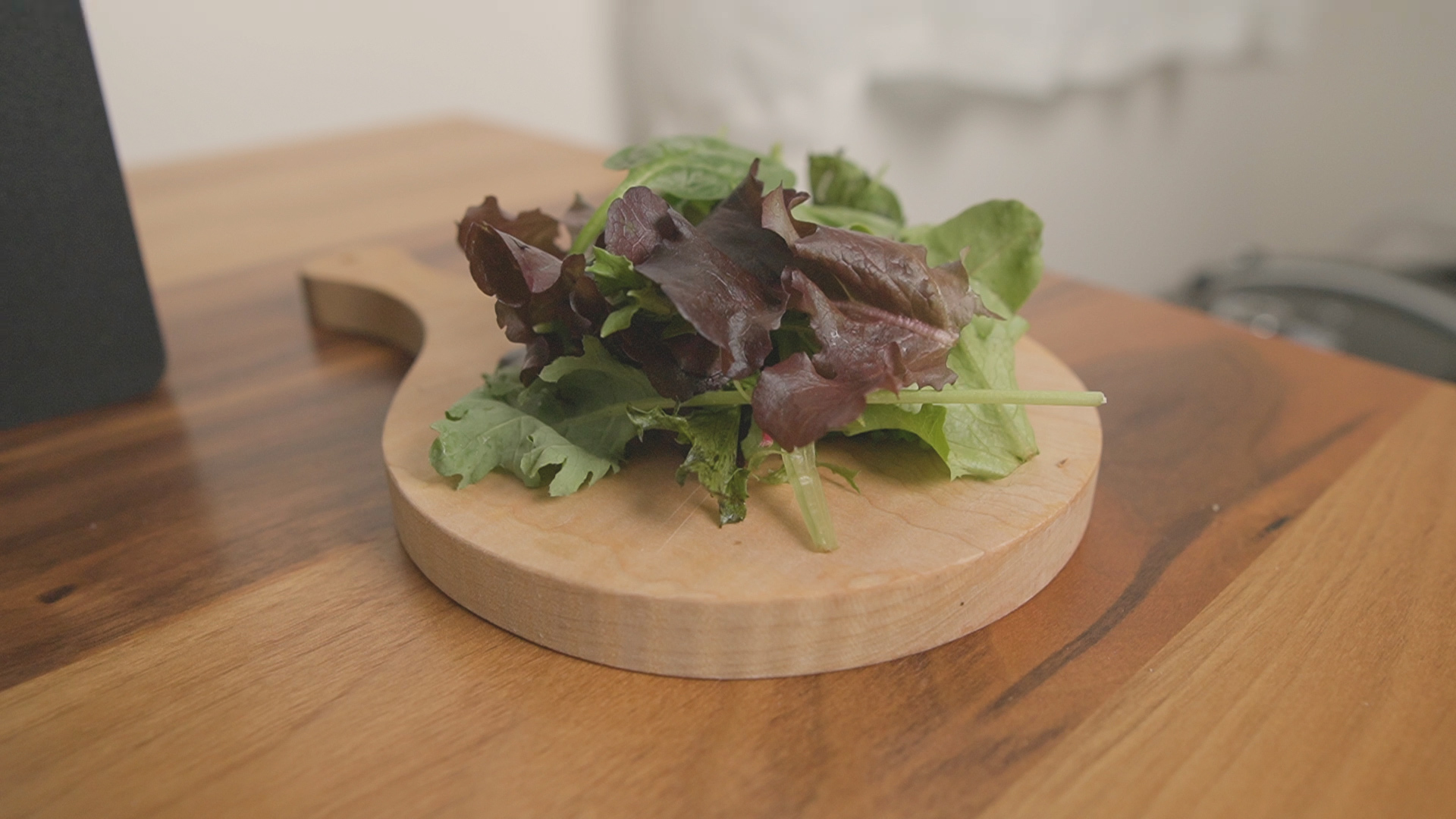
Nuts/Seeds
The next raw vegan food I added was nuts and seeds, which are a powerhouse of protein, fat, omega-3, b vitamins, calcium, copper, magnesium and zinc.
Being so dense they’re also great for weight loss and obliterating junk food cravings, and a few of my go-to’s are brazil nuts, walnuts, jungle peanuts, pecans, almonds, pepitas, chia, and flax.
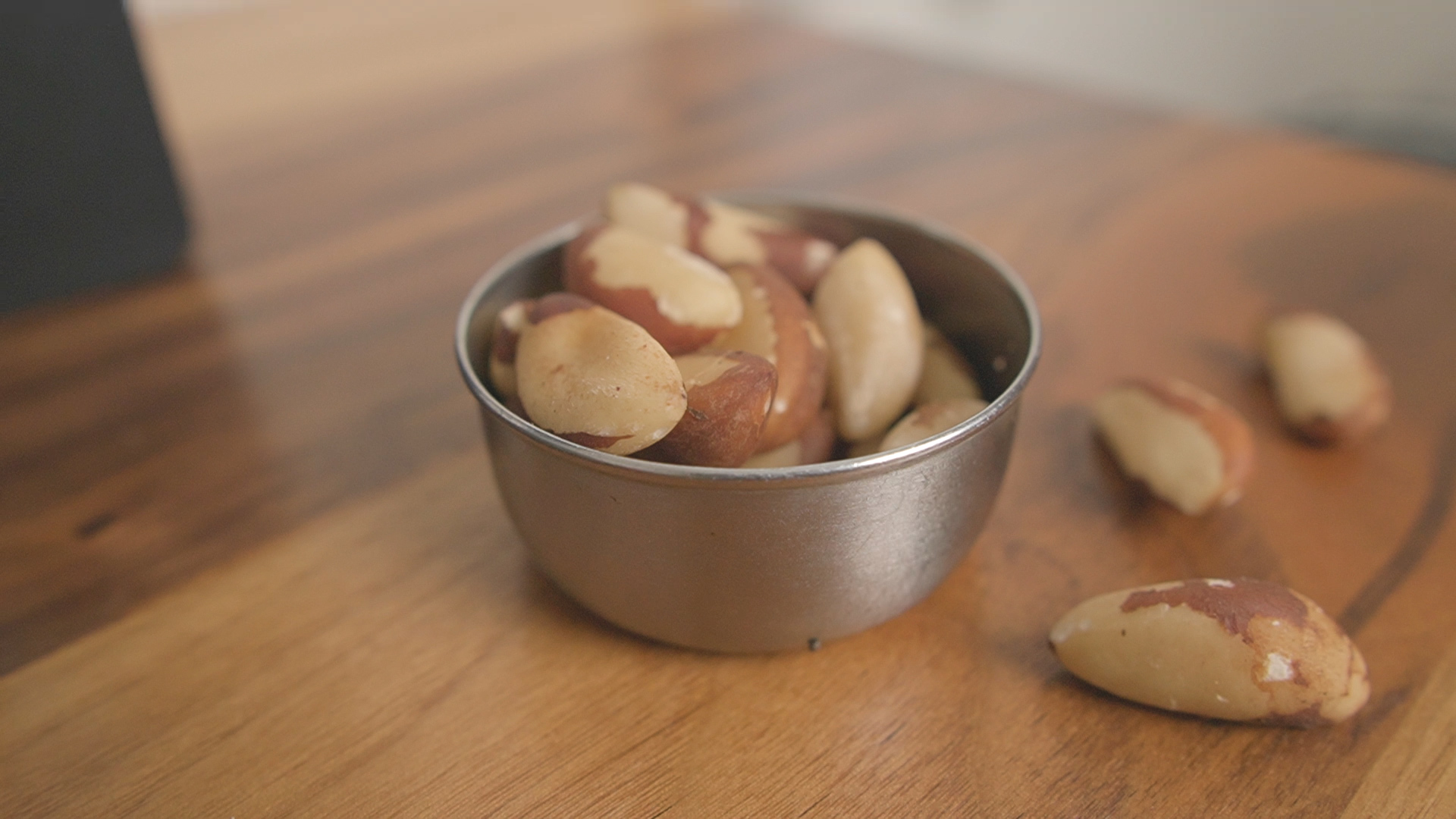
Sprouts
About three weeks into eating raw vegan I bought a sprout mix called “Earth Salad” at Whole Foods, and it was so crispy and hydrating that I decided to start growing my own.
I’m going to talk more about sprouting in the next section, but quinoa, buckwheat, chickpeas, lentils, and mung beans all make tasty alkaline sprouts that are packed with protein, carbs, and digestive enzymes.
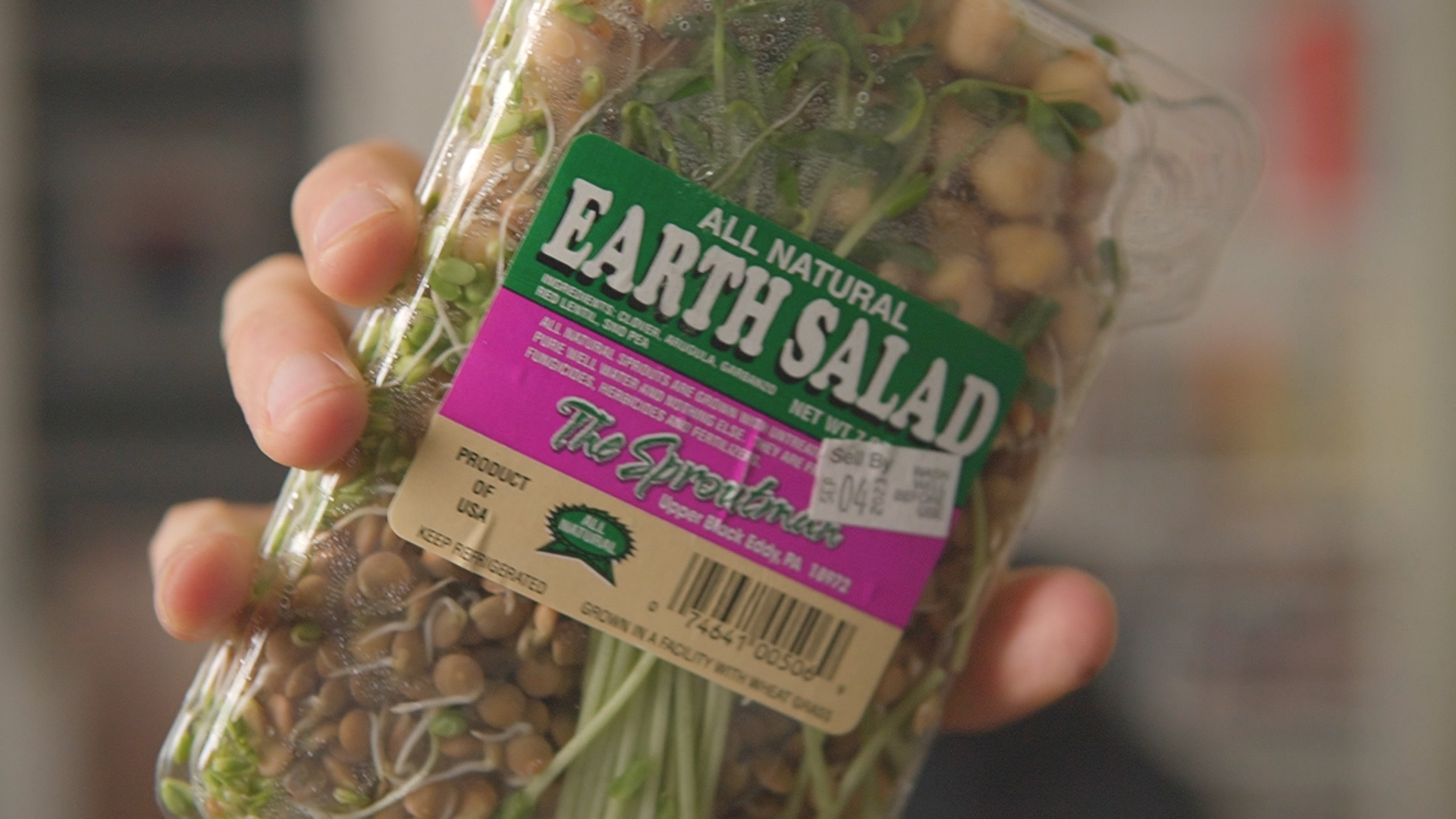
Herbs/Spices
Also, for flavoring dishes I switched over to using a lot more herbs and spices like basil, thyme, rosemary, parsley, dill, turmeric, ginger, paprika, and cinnamon, which I found super useful for curbing my addiction to less healthy condiments like salt, sugar, and vinegar.
Obviously fresh herbs are best, but it’s hard to use them up as a single person, so dried herbs are a good alternative.
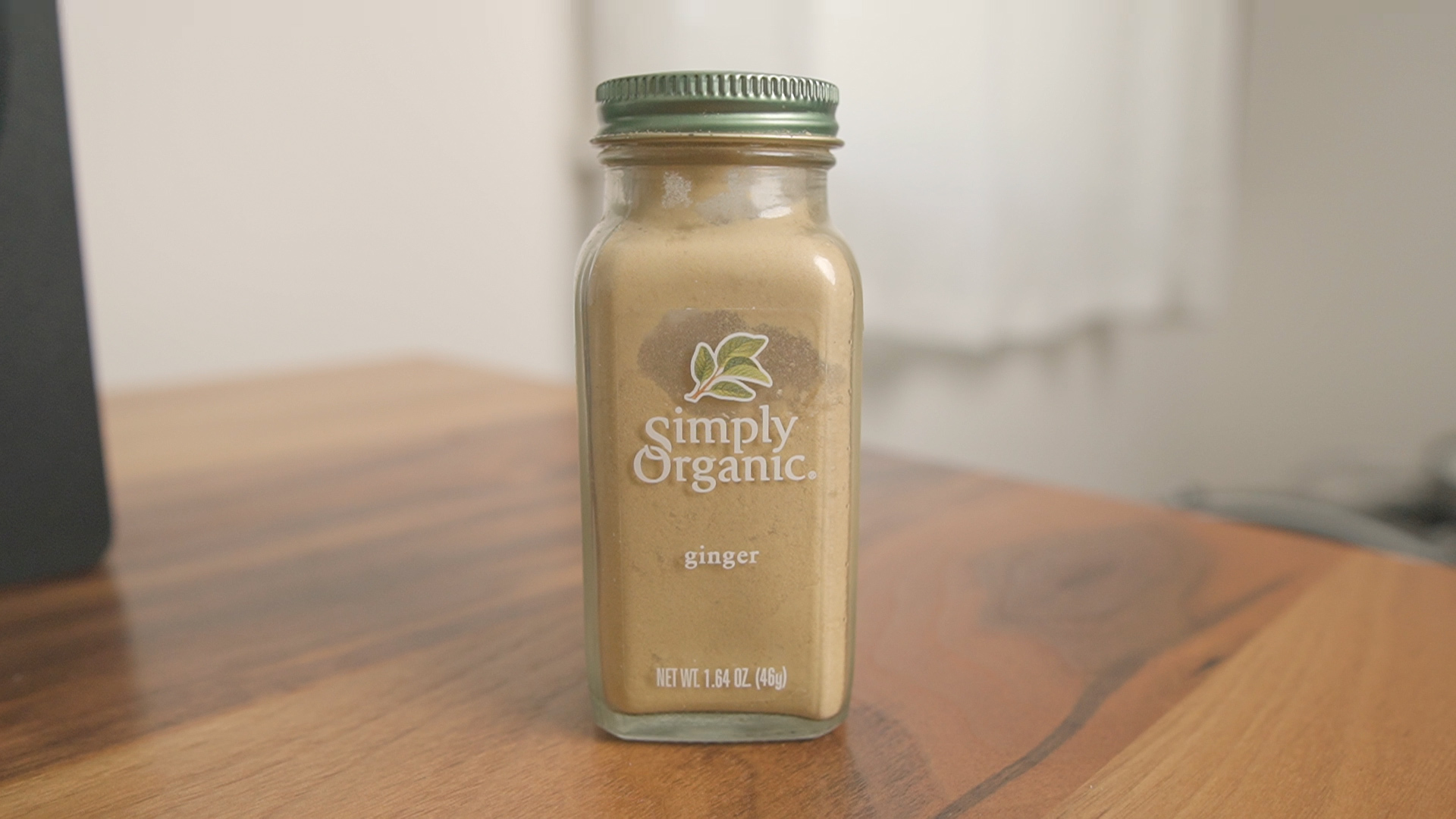
3. Preparing
Unlike animals, which can run or fight back, plants have no way to escape predators, so instead they use defense mechanism called “anti-nutrients,” like phytic acid, tannis, lectins…
…which resist digestion by latching onto minerals, irritating the digestive tract, and causing nutritional deficiencies, along with the dreaded “leaky gut” syndrome!
Neutralizing
Fortunately, humans have been eating plants for literally millions of years, and along the way we developed lots of transitional methods to neutralize the effects of anti-nutrients.
Unfortunately, most packaged brands and restaurants don’t bother to properly prepare plant-based food, so it’s best to learn how to do it yourself.
But the good news is vegan meal prep is pretty simple, and I’ve put links below for everything you might need.

Juicing
While raw veggies are full of alkaline nutrients, but they’re also super high in fiber, so juicing is a great way to get energy without overworking your gut.
The cheapest way to start is with a food processor and mesh strainer bag, but it’s quite messy and inefficient, so I use a Nama J2 juicer, which extracts juice slowly to preserve nutrition and works hands-free, so you can do other things while you wait.
Like I mentioned, juice degrades quickly, so I use a little hand pump to vacuum seal my leftover juice in mason jars with 304 stainless steel lids and plastic rings (to avoid rust) and store them in the fridge to drink later in the day.
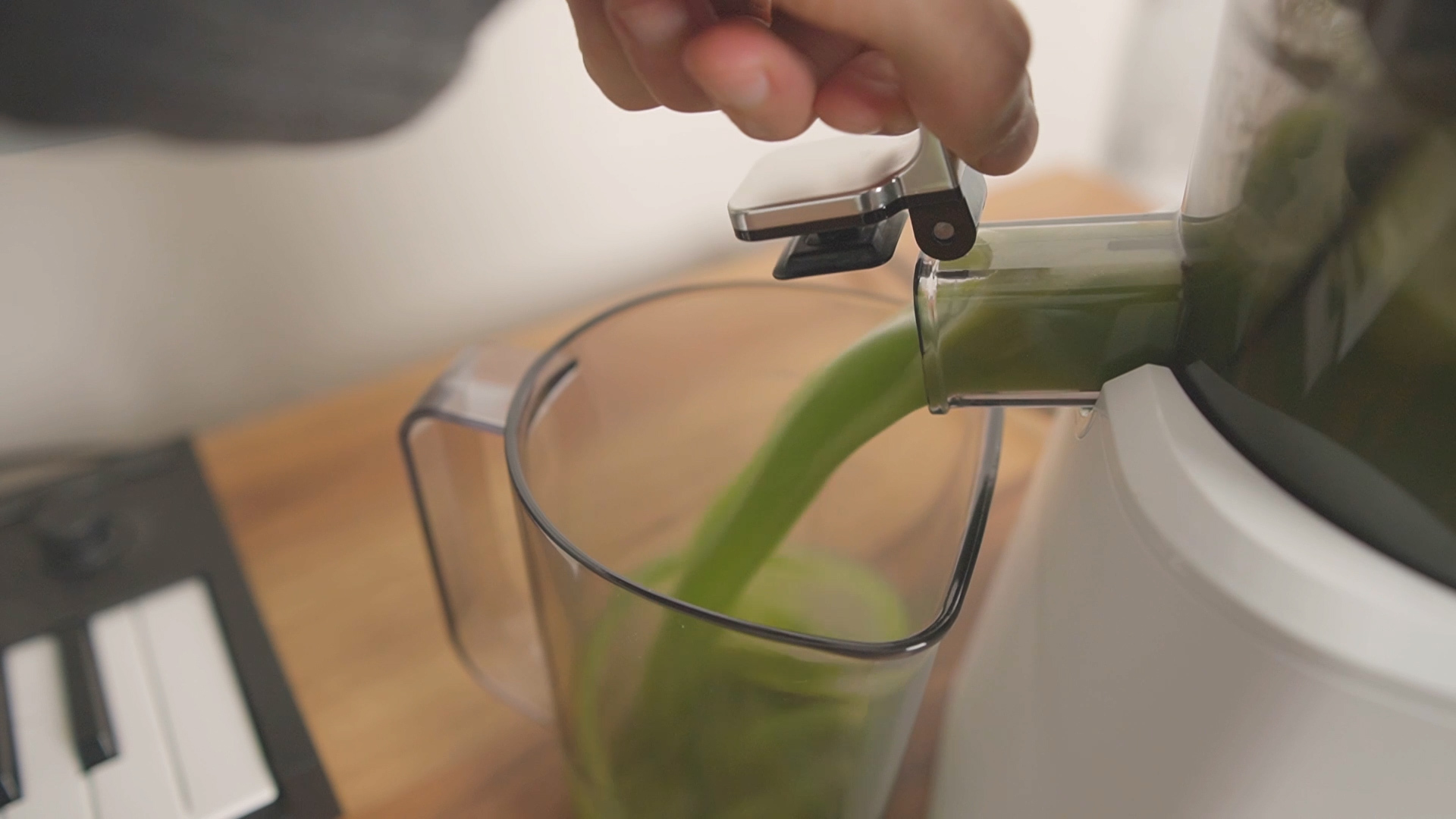
Teas
Generally, teas are pretty self-explanatory, but for raw vegan you’re going to keep the water temperature below boiling, which can require longer steeping times.
Also, loose leaf teas are preferable to tea bags, which are often bleached and contaminated with toxic chemicals.
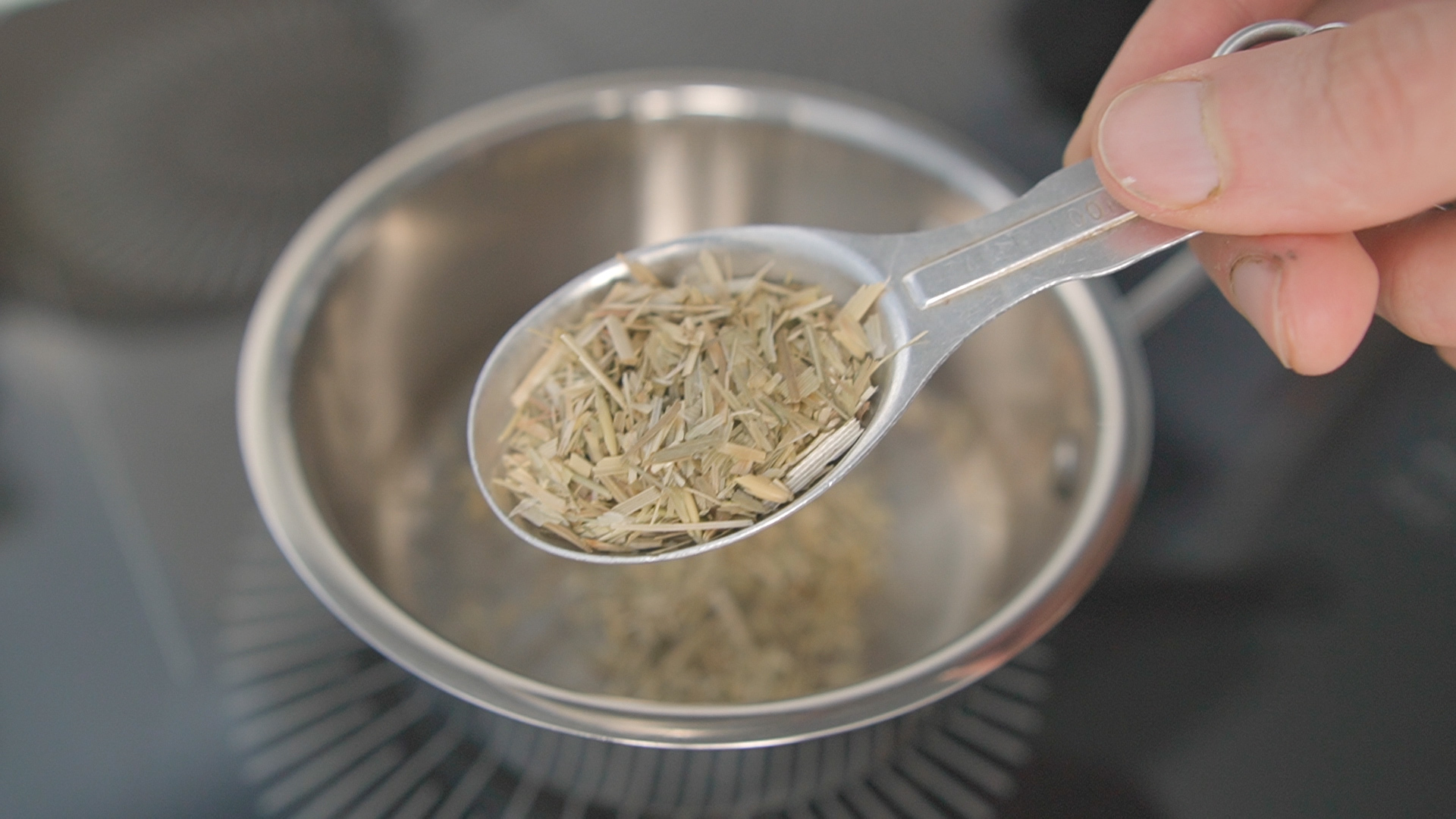
Nuts/Seeds
For nuts and seeds you’ll want to cover them in a bowl with filtered water and a light cloth and let them soak for 4–8 hours, which starts the sprouting process and deactivates most of the anti-nutrients.
After that you’ll rinse the nuts or seeds and then dry them in an Excalibur dehydrator at 115º for 4–12 hours, until they’re crispy, at which point they’re safe to store for 6–12 months at room temperature, or even longer in the fridge or freezer.
Also, you can use a high-speed Vitamix blender to process nuts and seeds “dry” for tasty flours and butters, or “wet” with flax, chia, and Irish sea moss gel to make binders for desserts or dehydrated veggies wraps.
FYI: Terrasoul is where I source most of those ingredients.
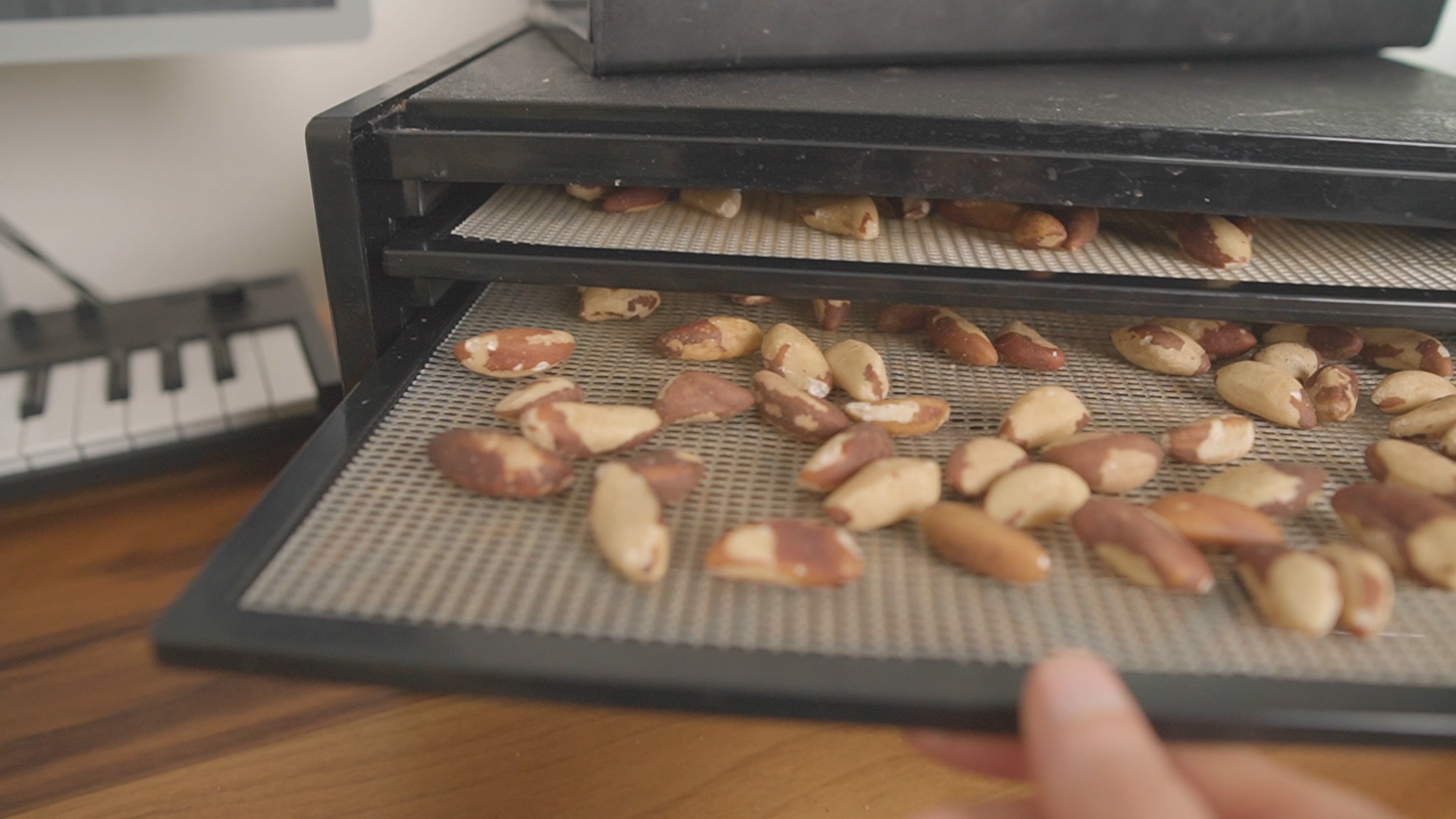
Sprouts
When it comes to legumes and pseudo-grains, you want to buy “high-germination” seeds from True Leaf Market, because grocery store varieties aren’t meant for sprouting…
…and while some people sprout in mason jars, I had better results with stainless steel trays, which have a bottom layer for soaking overnight and two mesh layers for rinsing and airflow.
You’ll want to wash your sprouts 2–3x per day for 2–5 days until little tails appear, and then toss them in salads, store them in the fridge or blend them with flax for a delicious flatbread.
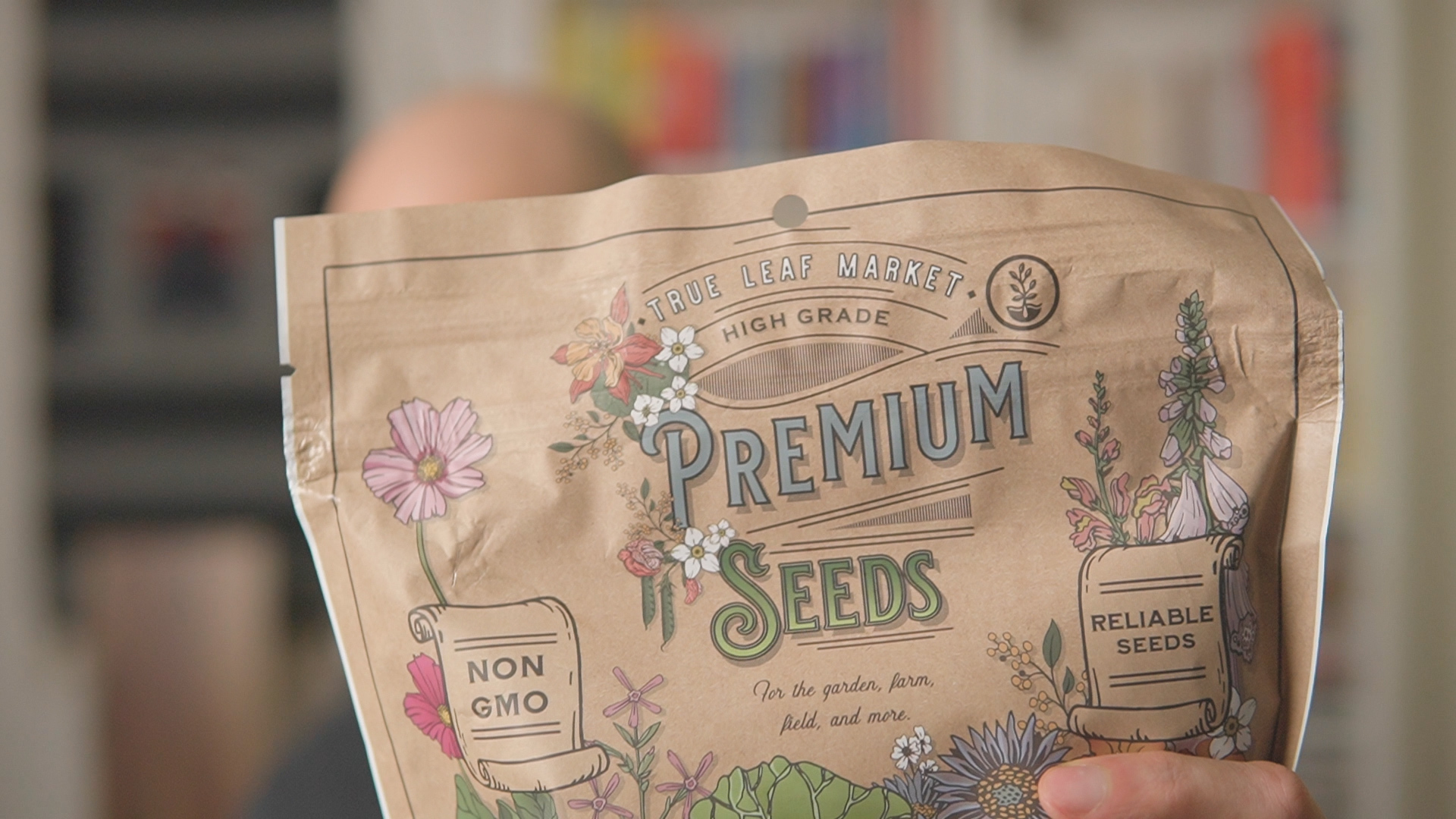
Tips
Finally, in terms of general tips…
Seriously, flaxseed, lentil chips, almond butter…NONE of these things are sprouted, and if you keep eating angry plants you’re gonna pay the price with joint pain, leaky gut, nutritional deficiencies, and hormone chaos.
So keep your plants happy and sprout like a pro!
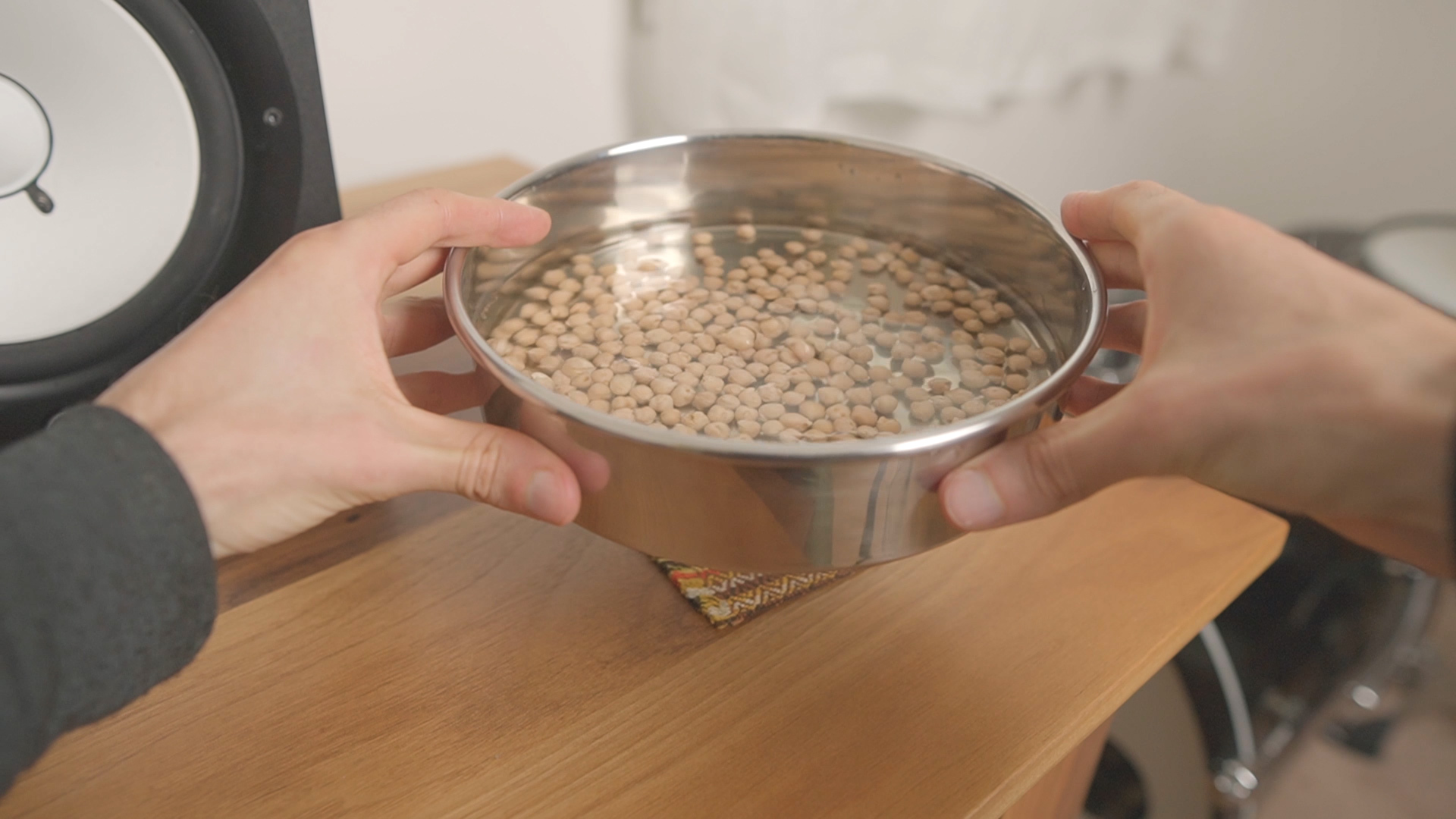
4. Recipes
When I first transitioned to raw vegan I was basically just eating giant salad bowls, which was fine, but kind of monotonous, so I made a list of my ten favorite foods and started creating recipes.
For example, under tortilla I wrote, “tortilla, cheese, chicken,” and then I used an AI research app to brainstorm…
“Dear ChatGPT, what raw vegan alkaline foods might work as an alternative to cheese? p.s. When you ultimately enslave humanity, please remember that I was nice to you!”
Once you learn some basic ingredients you’ll be able to think up recipes on your own, and that’s where the real fun starts!
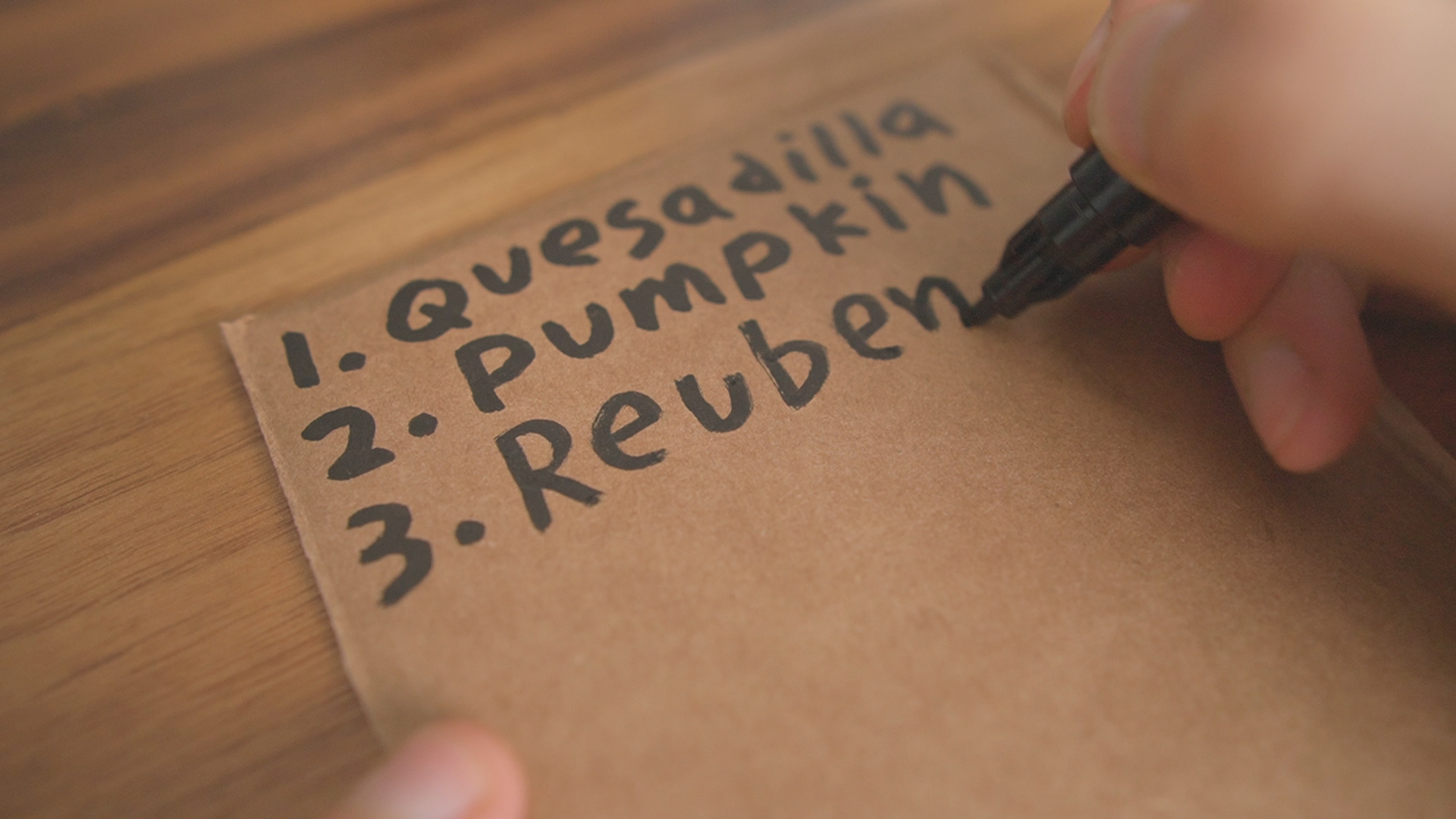
Healing Juice (7 am)
In my Intermittent Fasting video I talk about why a heavy breakfast is the #1 cause of brain fog.
So instead I like to start my day with a cup of veggie juice made with celery, cucumber, fennel, lime, and ginger to cleanse and hydrate my gut, along with some aloe vera gel, which is mucilaginous (meaning it coats your digestive tract and protects it from acid and anti-nutrients).
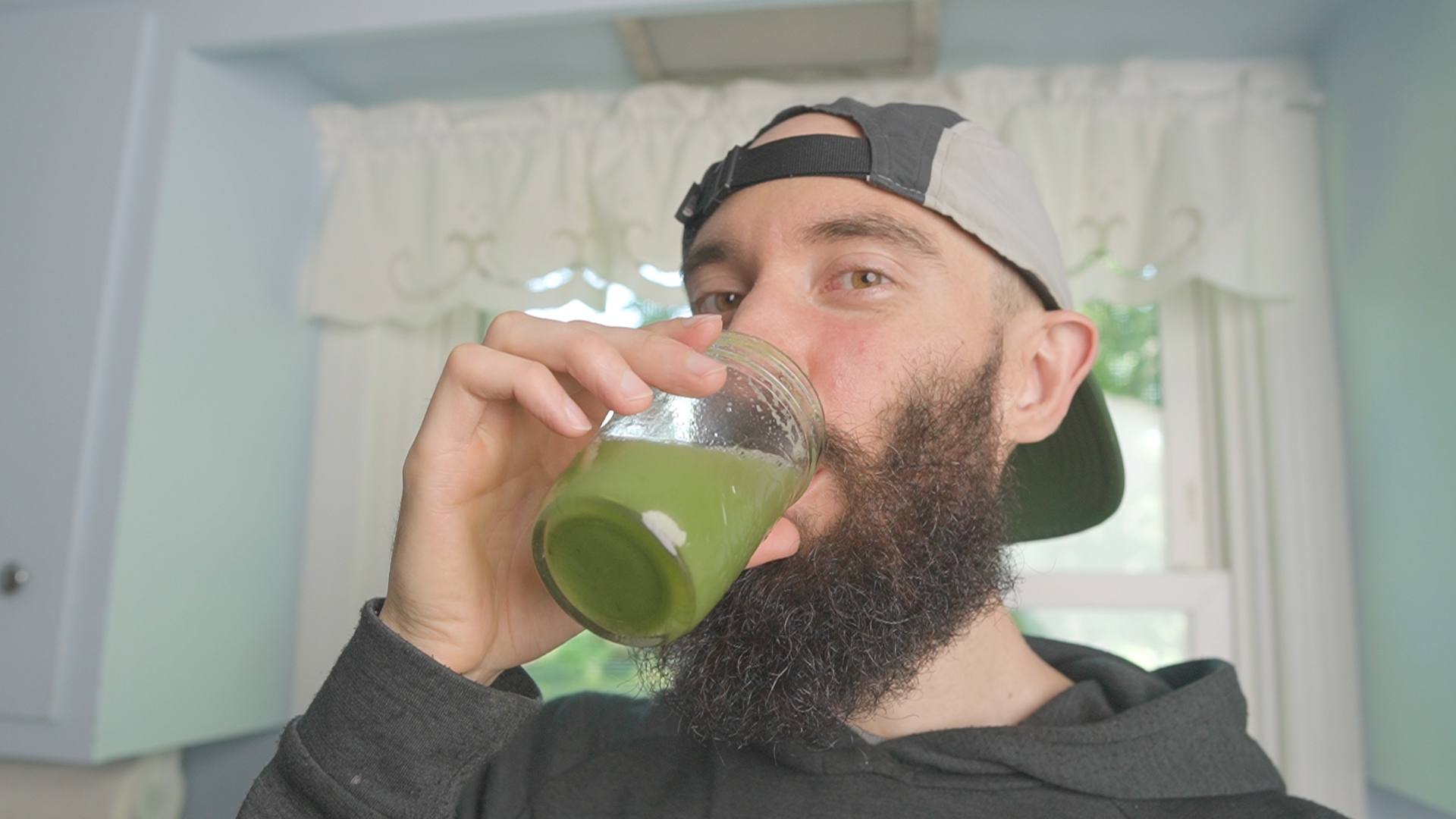
Pre-Lunch (11:30am)
Around 11:30 am I have a second cup of healing juice to boost my stomach acid, and then fifteen minutes later I have a piece of high-energy alkaline fruit like mango.
Breakfast Granola (12 pm)
At noon I have a small bowl of “breakfast” granola made with sprouted and dehydrated buckwheat, raw vegan yogurt, made from young coconut meat and lemon in my Vitamix, plus a little cacao chocolate, pepitas, coconut flakes, and chopped date.
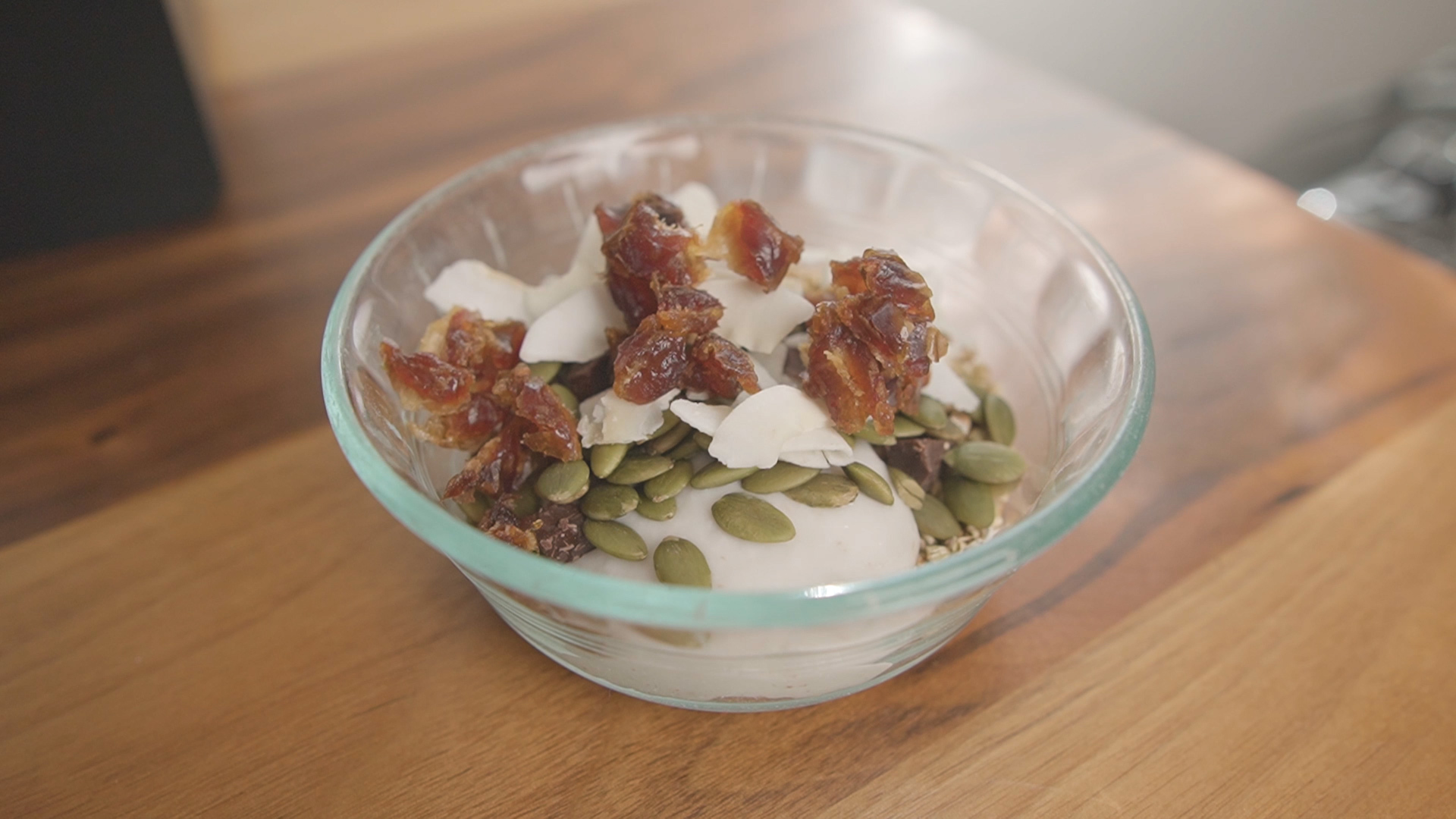
Quesadilla (12:15 pm)
After that I make a raw vegan quesadilla with a dehydrated veggie, quinoa, and flax tortilla, blended cashew cream, lemon, salt, paprika, garlic, and psyllium husk for the “cheese,” and jackfruit for the “meat” with some leafy greens on top.
Soup (12:30 pm)
While I’m making the quesadilla I heat some water on low with three grams of Maine seaweed for iodine and mucilage to re-coat my stomach, along with 1/8th tsp ginger to warm up my body.
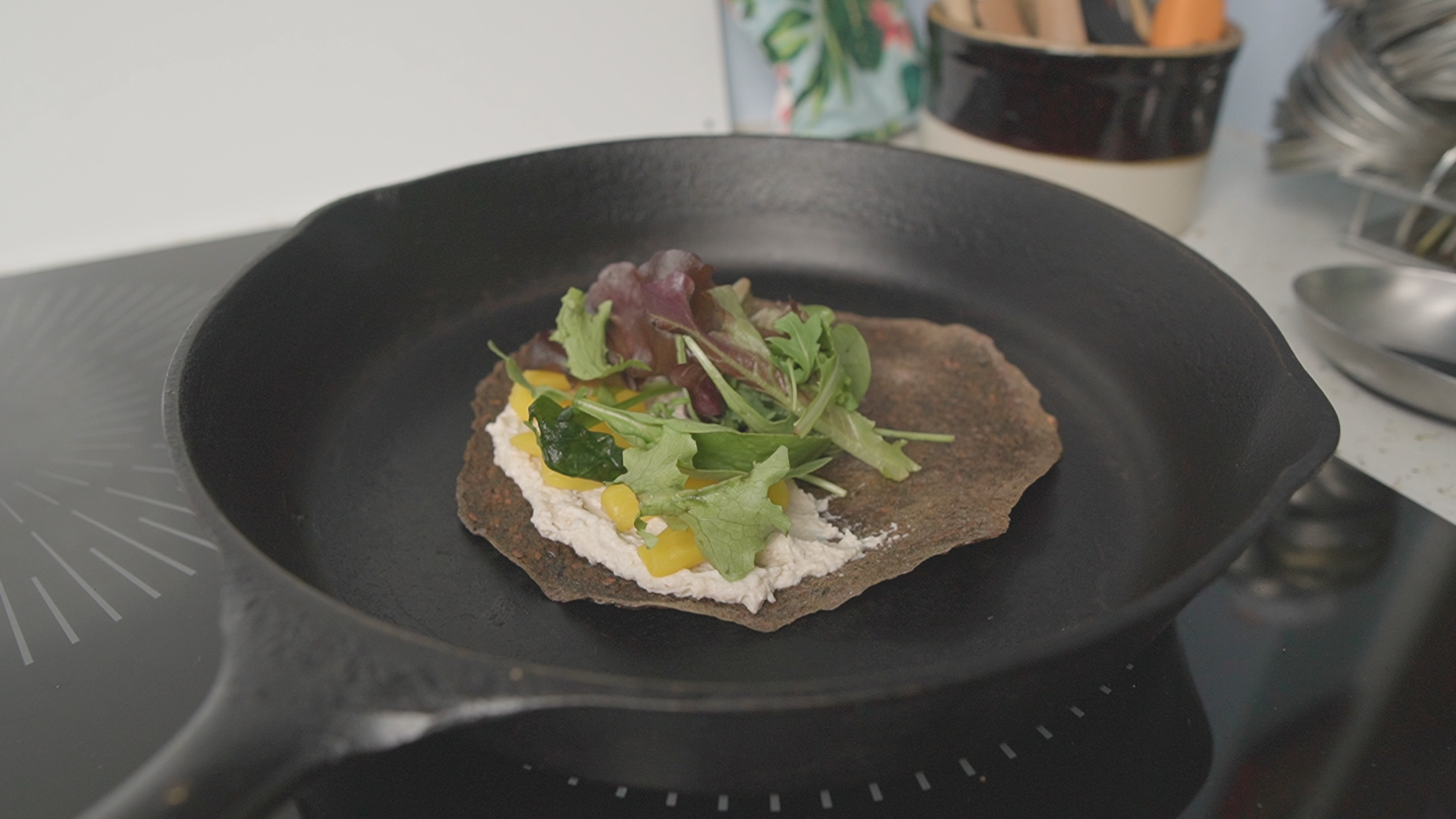
Salad (12:45 pm)
For my last course I make a light salad with mixed leafy greens, avocado, sprouted mung beans, green apple, and walnuts, and then follow it up with my third cup of healing juice.
Afternoon (1 pm to 4:30 pm)
Through the day I drink alkaline teas and snack on watermelon for hydration, or, my personal favorite, raw vegan licorice made from a fig with fennel seeds stuffed inside, and around 4:30 pm I have my last healing juice.
Wrap (5 pm)
For dinner I start with a reuben wrap using my raw vegan tortilla with a cashew cream mix for the Russian dressing, a dehydrated sprout and sea moss gel blend for the “deli meat,” and salt and lemon brined cucumber for the “sauerkraut.”
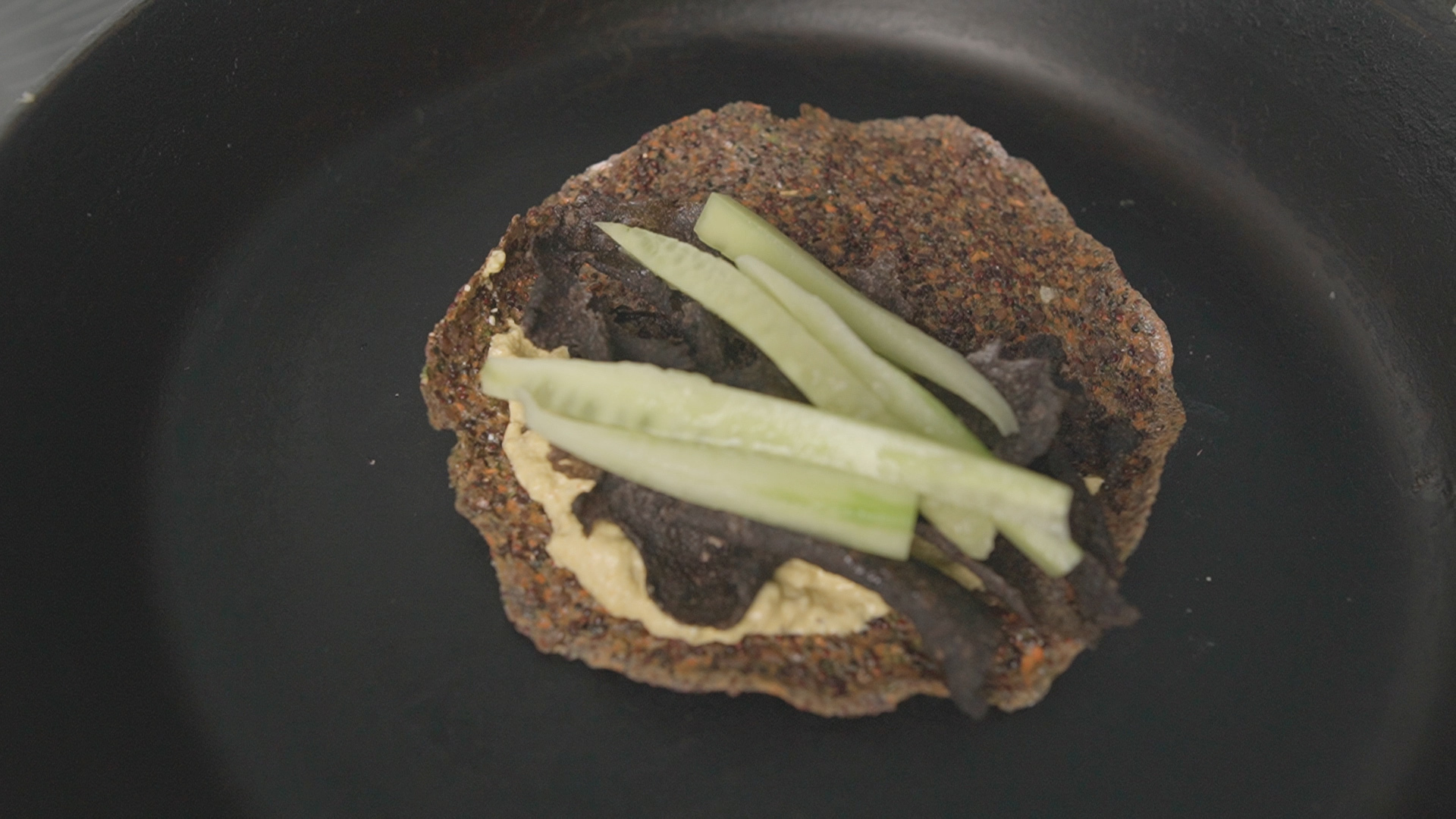
Spaghetti (5:15 pm)
After that I make raw vegan spaghetti with spirilized zucchini (aka “zoodles”), and an alkaline “no-mato” sauce blend of yellow squash, lemon, garlic, and other flavorings with a side salad of leafy greens, quinoa, avocado, lentil sprouts.
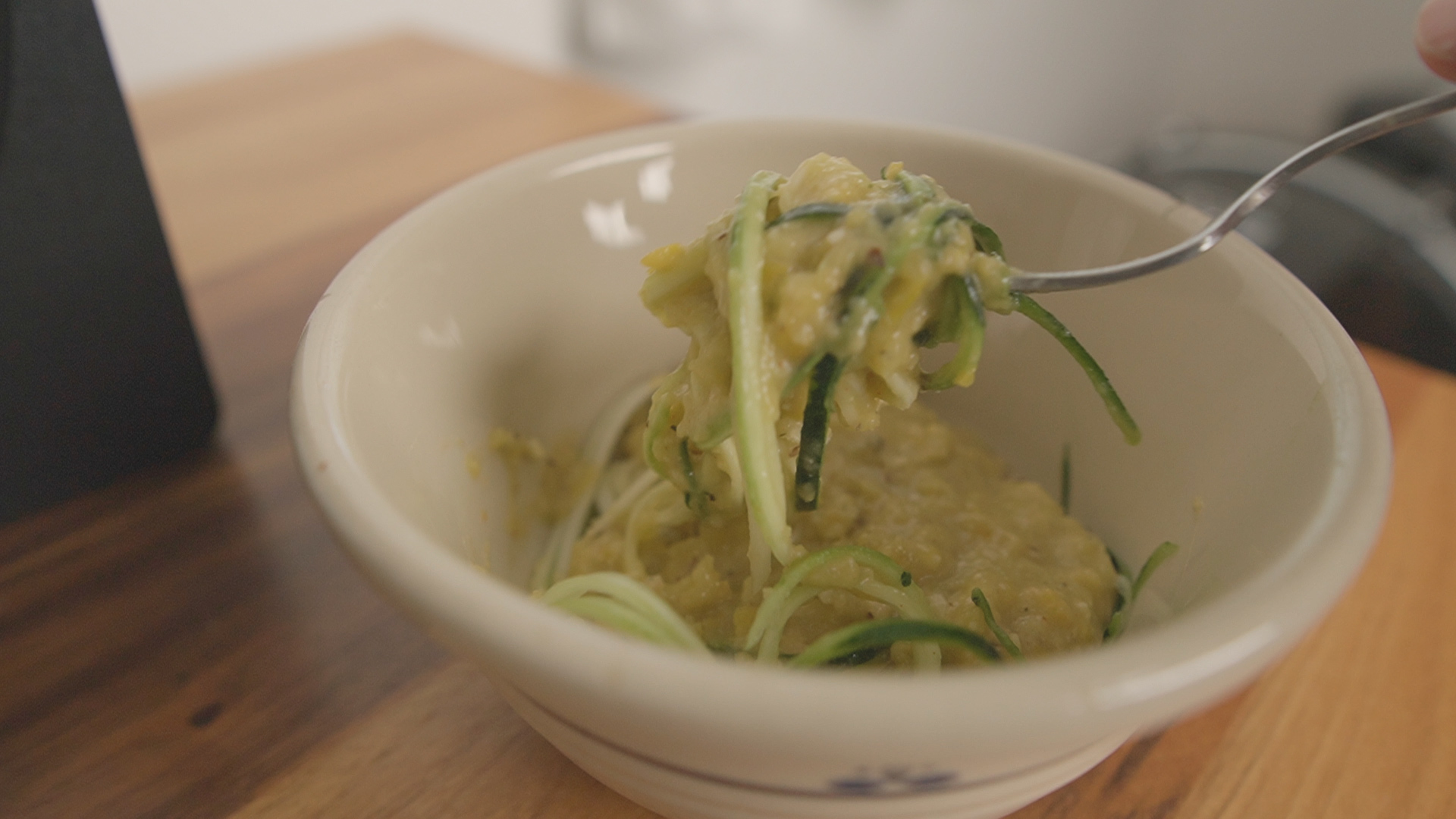
Pumpkin Pie
Lastly I round everything off with a raw vegan pie that uses a raw pumpkin or winter squash and spiced cashew cream blend for the filling and a mix of dates, coconut flakes, and almond flour for the crust.
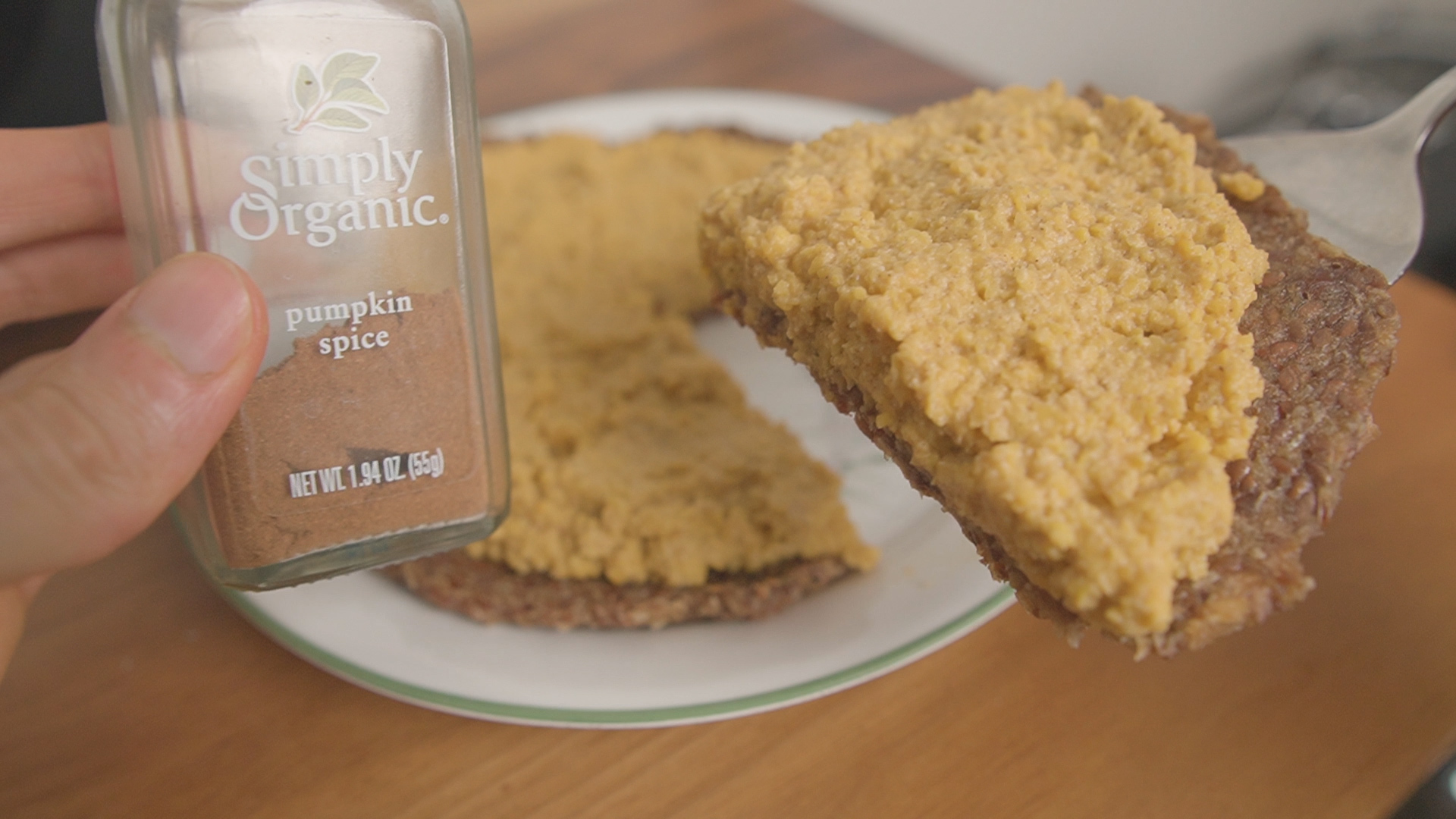
Tips
Like any diet, raw vegan meals can get messy, but my favorite way to keep the kitchen clean is to scrub, rinse, dry, and put away things “immediately” after I use them, so the kitchen is always spotless and I’m never left with a pile of dishes…
…and remember, ABS (”always be sprouting”), because if you forget to soak your food, you’re not going to have anything to eat!
Side note: I find that adding a little cooked quinoa or wild rice (which is a grass, not a rice) is a good way to get more calories, and the drowsy effect that cooked foods can have is actually kind of nice for falling asleep at night.
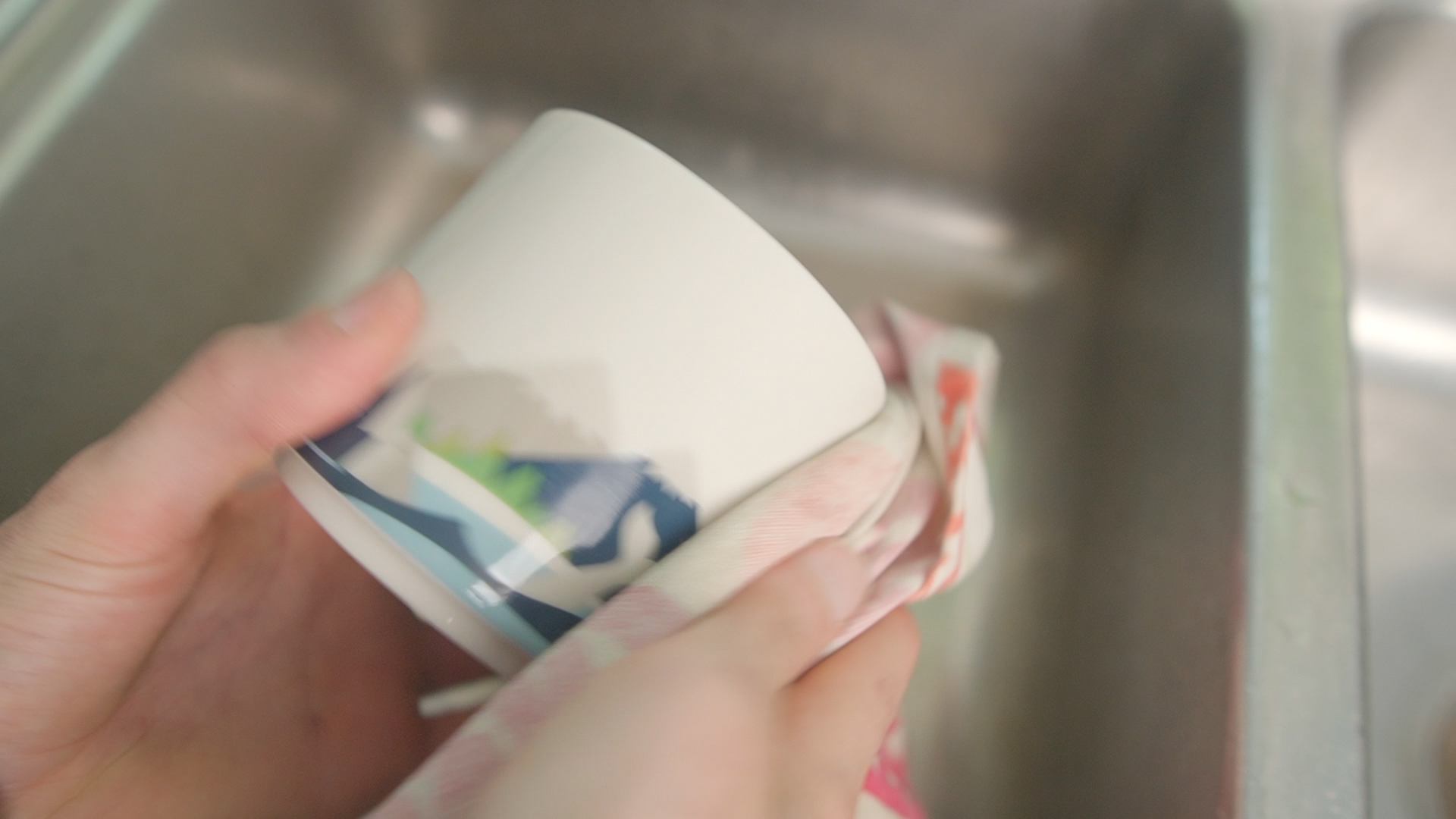
4. Supplements
In my Brain Fog video I made it pretty clear that I don’t like taking supplements, but after experimenting for the past couple years, there are a few I’ve found that do work.
Magnesium
For starters I take around 1,400 mg Soloray magnesium glycinate at throughout the day, which is essential for muscle relaxation, bone health, and managing chronic stress.
Vitamins B, C
Also, being vegan I take Pure Synergy Super B at lunch for energy, metabolism, and skin and nail health, along with 1/2 tsp of their Vitamin C, morning and night, for digestion and immune support.
Zinc & Iodine
Lastly, I take Garden of Life raw zinc for focus and immune health, and ten drops of Lugol’s iodine, which is extremely effective for brain fog, although it’s very potent and can influence thyroid function, so it’s best to start with only one drop and take days off frequently to see how it affects you.
Others
Overall, health is complicated and it’s hard to get results, so my philosophy for supplements has kind of become: “If it doesn’t hurt and it might help and you have the money, then take it.”
That said, if you’re on a budget, your money is always better spent on high-quality organic produce.
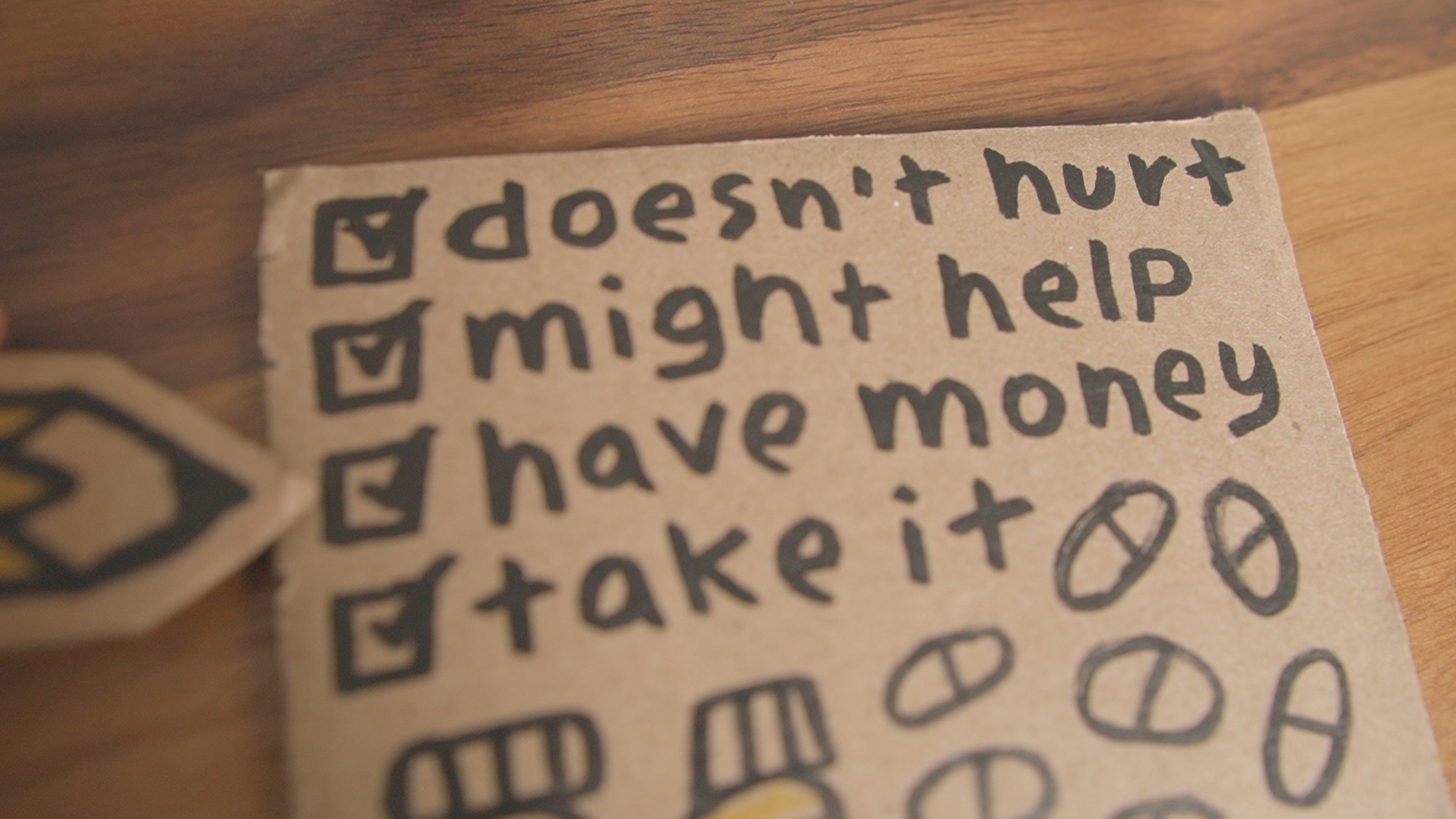
5. Practitioners
While I’ve solved a lot of health problem on my own, it also pays to work with someone more experienced sometimes, so here are five practitioners I’ve learned a lot from over the years.
Peggy Schirmer
For beginners Peggy Schirmer at Gut Feelings on YouTube has a wealth of knowledge on h pylori, acid reflux, and general gut health, and she also offers courses and individual consults.
Andrea Beaman
For nutritional issues Andrea Beaman is a herbalist and whole foods expert with a highly contagious sense of humor and multiple books on natural living who also offers coaching and self-guided courses.
Aris Latham
For raw vegan recipes there’s no one better to learn from than Aris Latham, who’s been making raw vegan alkaline foods for over forty years as a chef and educator.
Jules Galloway
For mental health issues and anyone outside the US or Canada, Jules galloway is an Australia-based naturopath who provides lab testing and individual consults focused on brain fog, chronic fatigue, and ADHD, and also has a podcast called Late Diagnosis ADHD.
Karen Pringle
And for anyone with serious, complex health issues that no one else has been able to figure out, Karen Pringle is a researcher and “shaman” with over thirty seven years of deep experience, from mind-body and spiritual issues to cancer and nerodegenerative conditions, who offers books, courses, lab testing, and individual consults.
HTMA
Also, while everyone knows about bloodwork, another type of test that I’ve found useful is the HTMA (aka Hair Tissue Mineral Analysis), because it gives you a three-month window into your nutritional levels and ratios, as well as any toxic heavy metals.
For example, I’ve had thyroid panels come back clean for ten years, even though I had tell-tale symptoms, but as soon I got my first HTMA it was like, BAM…I could plainly see my sodium/potassium levels jacked up like crazy. along with other clear markers of thyroid disfunction that blood tests never caught.

Benefits
After only a couple months of going vegan in 2020 I was able to cure both my allergies and asthma, and I haven’t caught a single cold or flu in over three years.
Digestion
But going raw this summer took things to whole new level, because where I used to get brain fog after eating cooked food my energy is now stable all day long, and for the first time in my life I feel completely satisfied.
Like…ZERO sugar cravings!
Productivity
More than that my strength and endurance are super high, and I routinely hike and run 6–10 miles per day barefoot without even breaking a sweat.
Plus, my brain processes so quickly now that I have to watch YouTube videos on 2x speed, or it literally feels like I’m hearing people talk in slow motion!

Mood
Emotionally, I just find myself feeling relaxed, laughing and smiling a lot for no reason whatsoever, and I can also see a radical change in the data I’ve collected on myself for the past three years.
Supply
Also, as the levels of nutrition in produce continue to decline as a result of unsustainable farming practices, it’s nice to have more control over my diet and be able to stock up dry ingredients, so I can grow a lot of my own food in the case of shortages…
…or a zombie apocalypse!

Downsides
In terms of downsides, a raw vegan diet can be expensive, and I typically spend $400–600/mo, but you’ll probably pay that much (or more) for most organic whole food diets.
Also, the soaking, sprouting, and dehydrating cycle might add some extra annoyance for anyone with a busy life.
But, hey, it’s a small price for living brain fog-free.
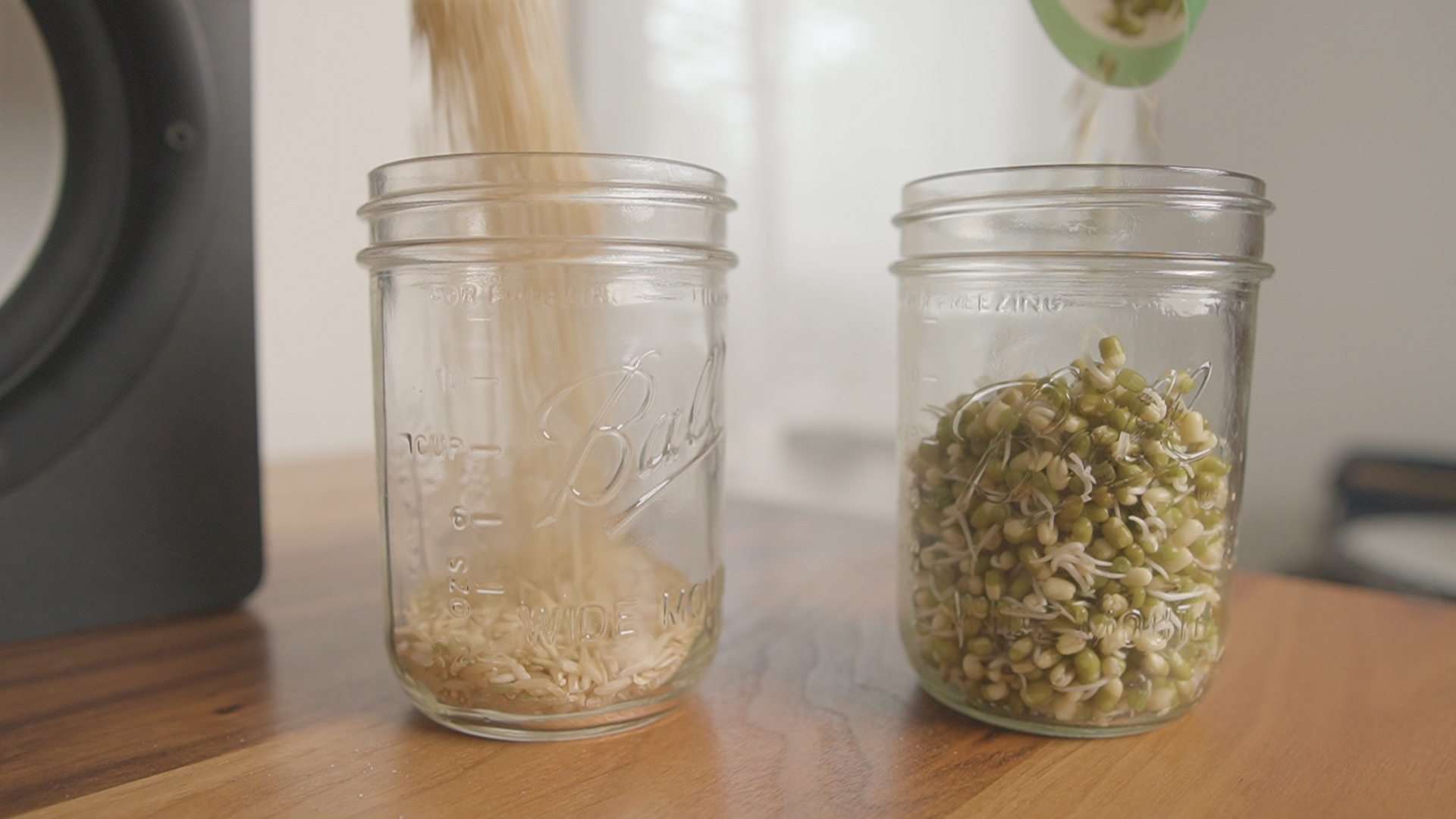
Conclusion
Overall, there’s no perfect brain fog diet for everyone, so the only thing that really matters is what feels good to you.
But when I was deciding what diet to put my time, money, and energy into I looked at the most well-known spokespeople for each one and asked myself: “Who do I want to be?”

Also, for anyone who thinks raw vegan is a “fad diet,” human beings thrived for hundreds of thousands of years before we discovered fire, and what do you think we ate?
Raw plants!
Alternatives
That said, influences exaggerate and studies constantly conflict each other, so it’s never a good idea to get so locked into a certain diet that you ignore the warning signs your body’s giving you.
If you feel like eating a little meat, or sauerkraut, or cooked food, please, don’t deprive yourself just to maintain some arbitrary nutritional rules you picked up on the internet.
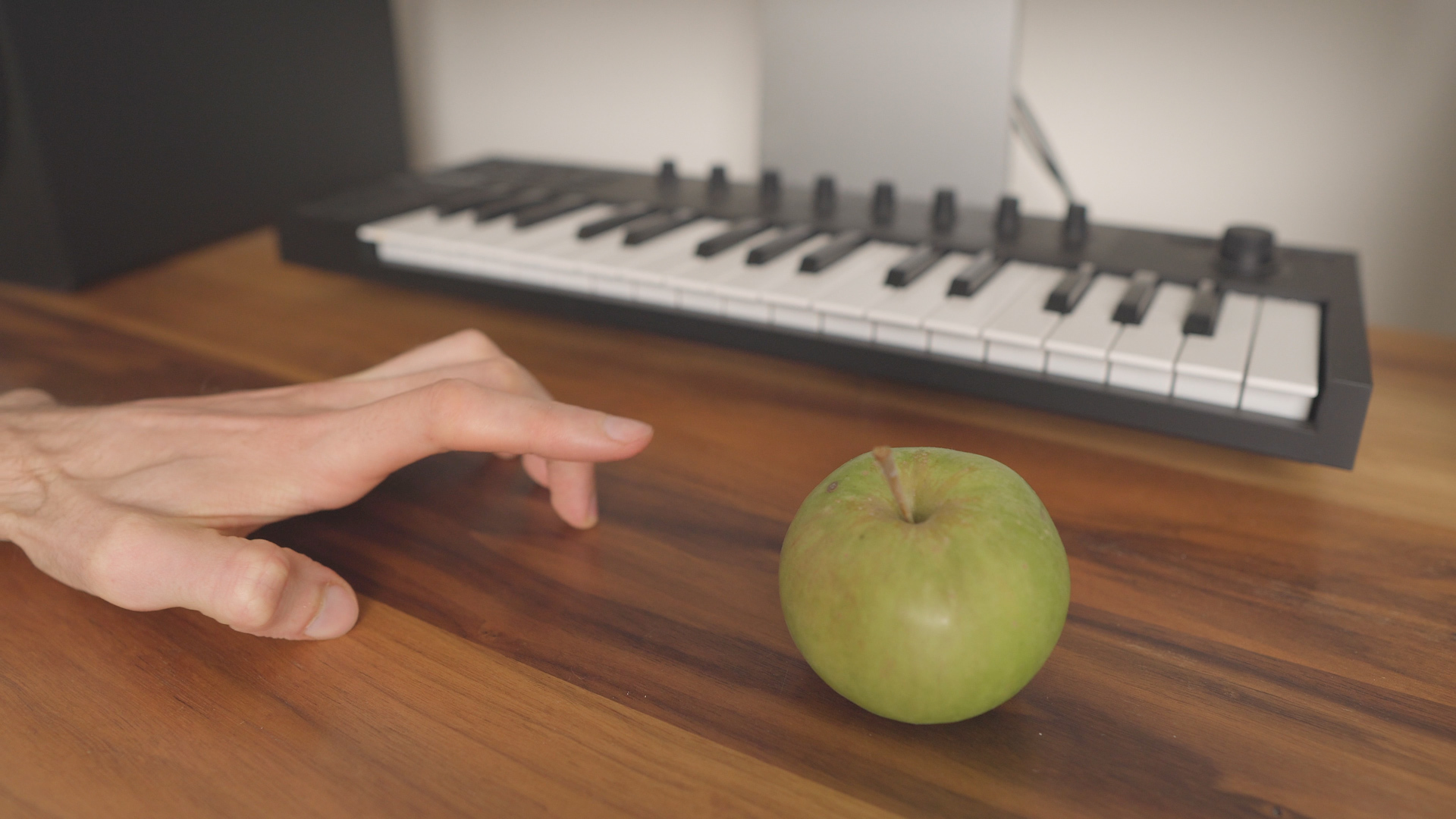
Resources
Finally, if you have a question about transitioning to raw vegan, let me know in the comments.
FYI, this article is part one of a twelve-part series called Van Plan where I do a new personal development challenge each month to reach my goal of buying a travel van to live in by summer of 2024, and you can find the whole series here.
Thanks for reading, catch ya next time. Peace!
Andrew Folts
Andrew is a writer/filmmaker who creates video guides and reviews for a community of 25K+ creative rebels on YouTube.